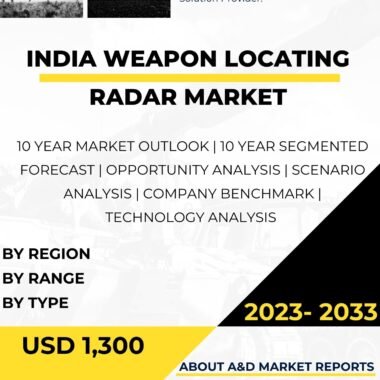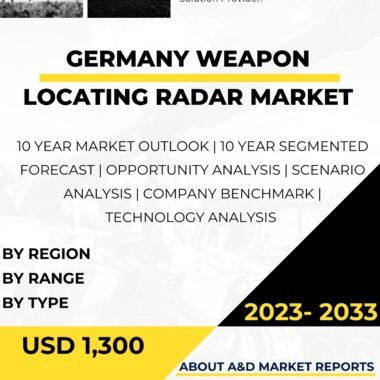Description
The weapon locating radar market in Japan has experienced significant growth and strategic importance as the nation seeks to enhance its military capabilities and improve its ability to detect and counter incoming enemy fire. Weapon locating radars are advanced surveillance systems designed to detect and track the origin of artillery, rockets, and mortars, providing crucial information for timely and effective response measures.
The weapon locating radar market in Japan encompasses a diverse range of radar systems, including counter-fire radars and early warning radars. These radars are utilized by the Japan Ground Self-Defense Force (JGSDF) and other branches of the Japan Self-Defense Forces (JSDF) to enhance force protection, reduce casualties, and improve overall operational effectiveness.
One of the primary applications of weapon locating radars in Japan is in improving force protection and enhancing situational awareness. These radars are deployed to detect and track incoming enemy fire, providing real-time data on the location and trajectory of hostile projectiles. This information allows military forces to respond promptly and accurately to the threat, either through engaging the source of fire or implementing effective countermeasures.
Moreover, weapon locating radars play a crucial role in minimizing collateral damage and civilian casualties during military operations. By accurately identifying the origin of enemy fire, these radars enable military forces to focus their response on the source of the threat, reducing the risk of unintended harm to non-combatants and civilian infrastructure.
Furthermore, the weapon locating radar market in Japan contributes significantly to enhancing the effectiveness of the JGSDF’s artillery and rocket units. By providing accurate and timely information on enemy fire, weapon locating radars enable Japanese artillery and rocket units to adjust their fire and improve their target acquisition capabilities, enhancing their operational efficiency and accuracy.
As Japan emphasizes indigenous defense capabilities, the domestic production and development of weapon locating radars have seen substantial growth. Collaborations between the government, defense industry, and research institutions have fostered innovation, leading to the creation of state-of-the-art radars tailored to Japan’s specific operational requirements.
Japan’s alliance with the United States has also played a significant role in the development of its weapon locating radar capabilities. Through this partnership, Japan has access to advanced radar technologies, expertise, and support, contributing to the modernization of its defense forces and enhancing interoperability with allied forces.
The weapon locating radar market in Japan also benefits from advancements in radar technology, signal processing, and data fusion. Manufacturers have leveraged these developments to create radars with improved accuracy, range, and resistance to electronic warfare, making them more effective and reliable in detecting and tracking enemy fire.
However, the weapon locating radar market in Japan also faces challenges related to cost, technology integration, and operational interoperability. Developing and deploying advanced radar systems can be costly, requiring efficient resource allocation and long-term planning.
Moreover, integrating weapon locating radars seamlessly into existing military operations and command structures requires careful consideration and training. Ensuring interoperability with other surveillance and command and control systems is crucial for maximizing the effectiveness of weapon locating radars in military operations.
Additionally, addressing cybersecurity challenges is essential for safeguarding the communication and data transmission of weapon locating radars, protecting them from potential cyber threats and ensuring the integrity of critical military information.
In conclusion, the weapon locating radar market in Japan has witnessed significant growth and strategic importance, driven by the nation’s focus on enhancing its military capabilities and improving its ability to detect and counter incoming enemy fire. Weapon locating radars provide critical solutions for force protection, situational awareness, and improving the effectiveness of artillery and rocket units, catering to Japan’s specific defense requirements. The collaboration between the government, defense industry, and research institutions, as well as international partnerships with allied nations, fosters innovation and contributes to the growth of the domestic weapon locating radar market. Addressing challenges related to cost, technology integration, operational interoperability, and cybersecurity is crucial for further enhancing Japan’s weapon locating radar capabilities and ensuring that its defense forces have access to advanced and reliable radar systems to support military operations, enhance force protection, and contribute to the nation’s operational excellence and safety. With its strategic focus on indigenous defense capabilities and partnerships with allied nations, Japan remains committed to leveraging advanced weapon locating radar technologies to enhance its military capabilities, safeguard personnel, and contribute to regional and global peace and security.




